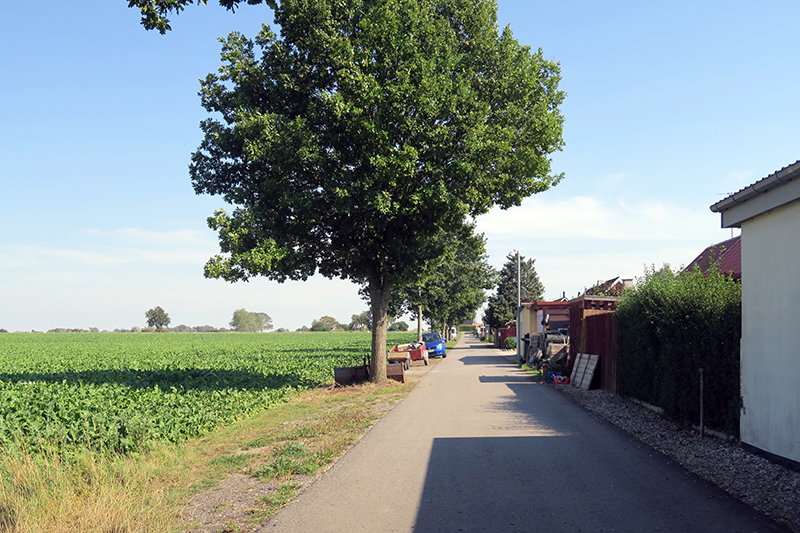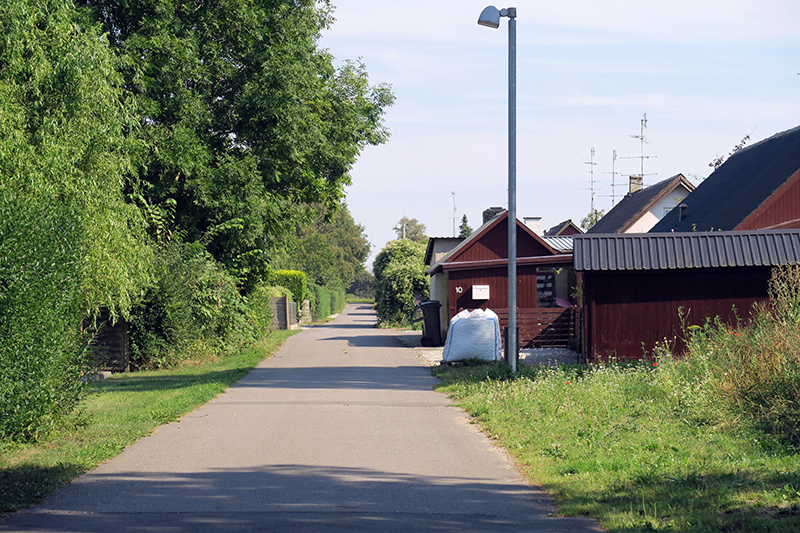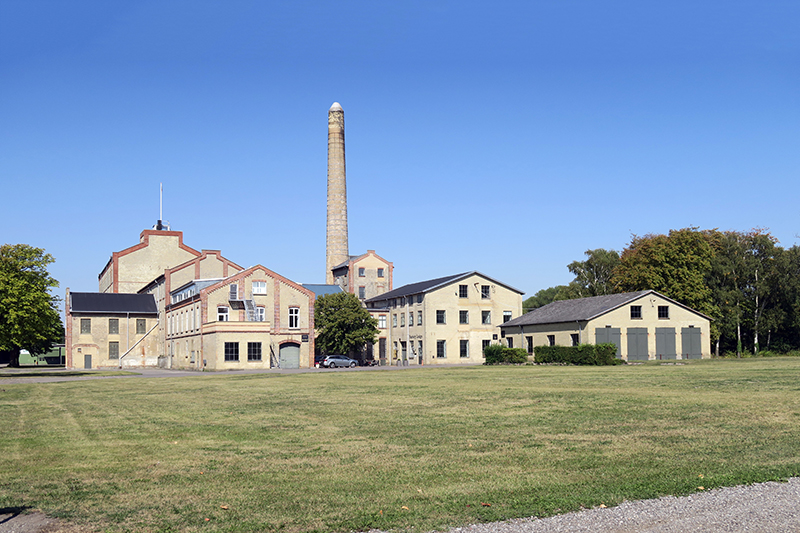Holeby Beet Sugar Factory and Garden City
An example of a cultural environment in Lolland Municipality
An example of a cultural environment in Lolland Municipality
Sukkerfabrikken Lolland (The Lolland Beet Sugar Factory) from 1872 comprises a manager’s residence, clerks’ residences, stables/garages, the factory complex itself, a gasworks, an engine shed, and a weighing house for the sugar beet deliveries of farmers. The factory was built on an open field. And the need for rail transport was solved by the Maribo to Rødby side-track of Lollandsbanen making a detour by the factory, ensuring a railway connection for the village of Holeby.
You can still see the station and the track passing by the factory today. The planned garden city from 1873, where around 40 workers’ houses were built as double houses with adjacent kitchen gardens, has retained its structure along three parallel roads.



Holeby Sukkerfabrik tells the story of the very beginning of Lolland’s sugar adventure. From the middle of the 1800s, the beet sugar industry was prospering in the Nordic Countries, whereas in Denmark West Indian cane sugar continued to be more important. The factory in Holeby was consequently built as a venture by the brothers Frederiksen – on their ancestors’ land and on land leased by the manor of Højbygaard Gods. Even today the huge building complex is a clear testimony to how Lolland merged agriculture and factory – farmers and workers – into a sugar production that underpins the region’s identity.
Principal conservation values include the station, the railway track, the sugar beet factory and other industrial buildings, and the garden city located northeast of the factory.
Parts of the factory and the industrial buildings have been renovated and are today used for other purposes, whereas the eastern side of the factory building remains empty and is falling into disrepair. The environment was designated as an Industrial Heritage Site in 2007.
Related
YOU MAY ALSO BE INTERESTED IN

 Redningsvejen, Thisted Municipality Redningsvejen
Redningsvejen, Thisted Municipality Redningsvejen